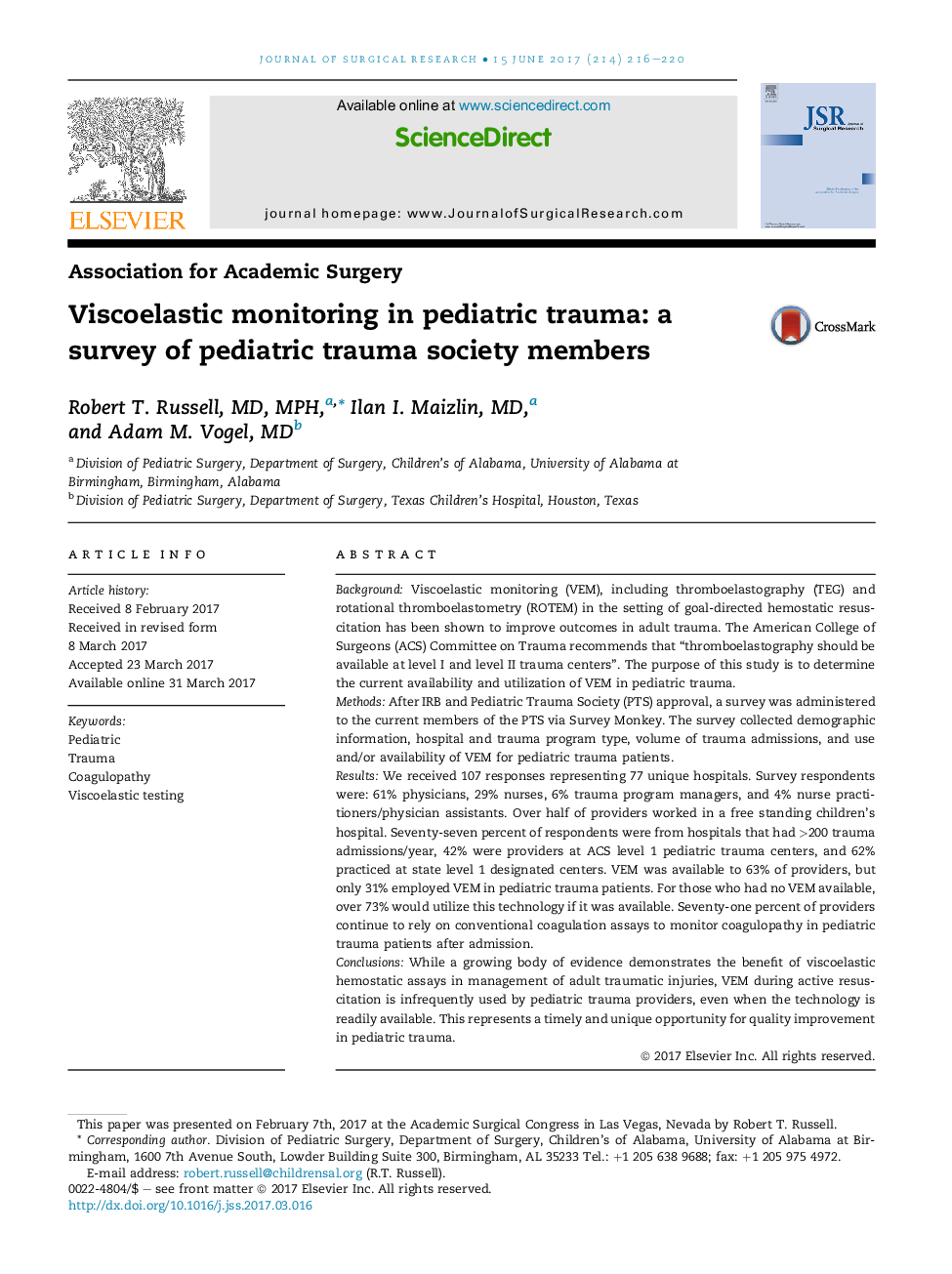| کد مقاله | کد نشریه | سال انتشار | مقاله انگلیسی | نسخه تمام متن |
|---|---|---|---|---|
| 5733794 | 1612518 | 2017 | 5 صفحه PDF | دانلود رایگان |
BackgroundViscoelastic monitoring (VEM), including thromboelastography (TEG) and rotational thromboelastometry (ROTEM) in the setting of goal-directed hemostatic resuscitation has been shown to improve outcomes in adult trauma. The American College of Surgeons (ACS) Committee on Trauma recommends that “thromboelastography should be available at level I and level II trauma centers”. The purpose of this study is to determine the current availability and utilization of VEM in pediatric trauma.MethodsAfter IRB and Pediatric Trauma Society (PTS) approval, a survey was administered to the current members of the PTS via Survey Monkey. The survey collected demographic information, hospital and trauma program type, volume of trauma admissions, and use and/or availability of VEM for pediatric trauma patients.ResultsWe received 107 responses representing 77 unique hospitals. Survey respondents were: 61% physicians, 29% nurses, 6% trauma program managers, and 4% nurse practitioners/physician assistants. Over half of providers worked in a free standing children's hospital. Seventy-seven percent of respondents were from hospitals that had >200 trauma admissions/year, 42% were providers at ACS level 1 pediatric trauma centers, and 62% practiced at state level 1 designated centers. VEM was available to 63% of providers, but only 31% employed VEM in pediatric trauma patients. For those who had no VEM available, over 73% would utilize this technology if it was available. Seventy-one percent of providers continue to rely on conventional coagulation assays to monitor coagulopathy in pediatric trauma patients after admission.ConclusionsWhile a growing body of evidence demonstrates the benefit of viscoelastic hemostatic assays in management of adult traumatic injuries, VEM during active resuscitation is infrequently used by pediatric trauma providers, even when the technology is readily available. This represents a timely and unique opportunity for quality improvement in pediatric trauma.
Journal: Journal of Surgical Research - Volume 214, 15 June 2017, Pages 216-220
